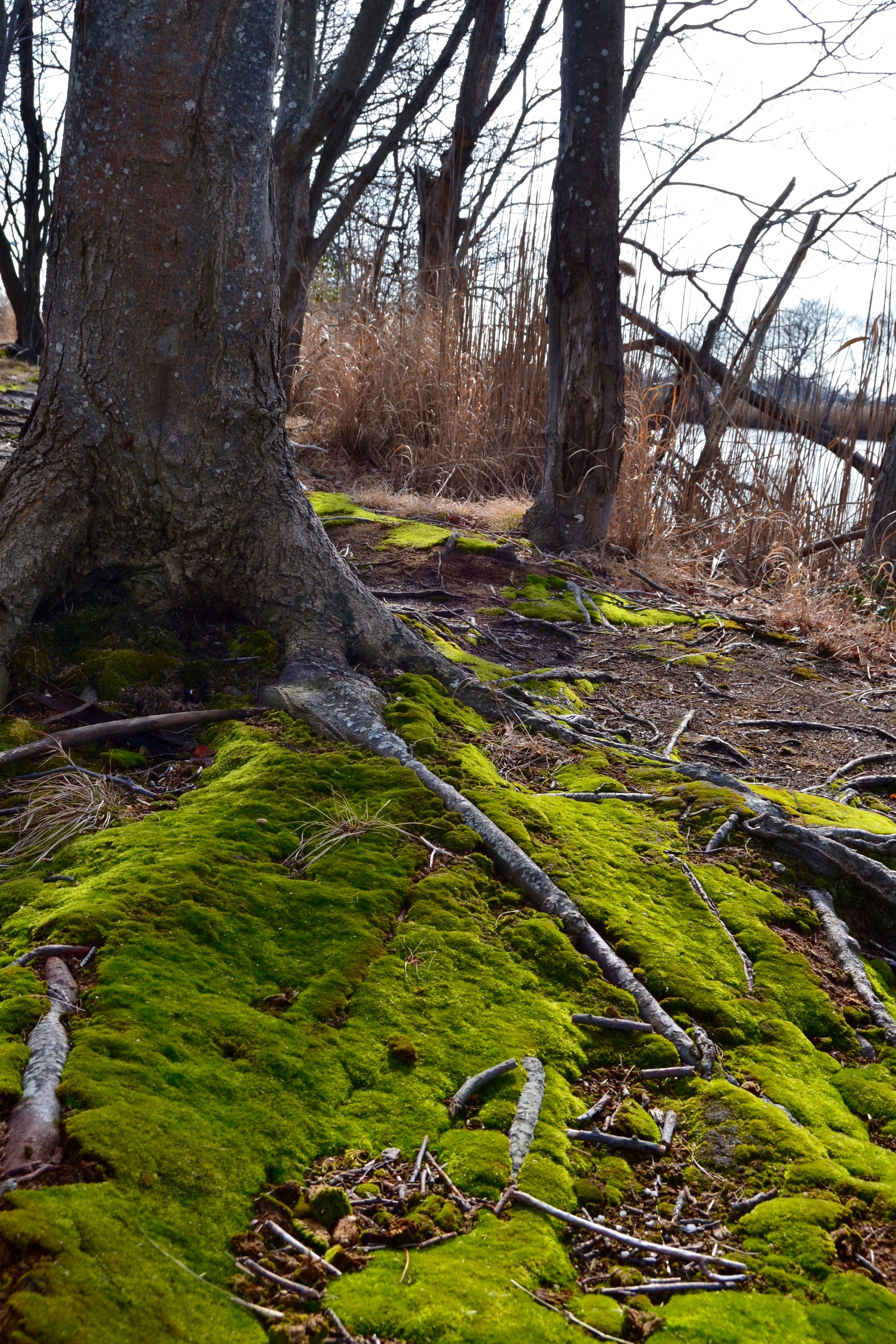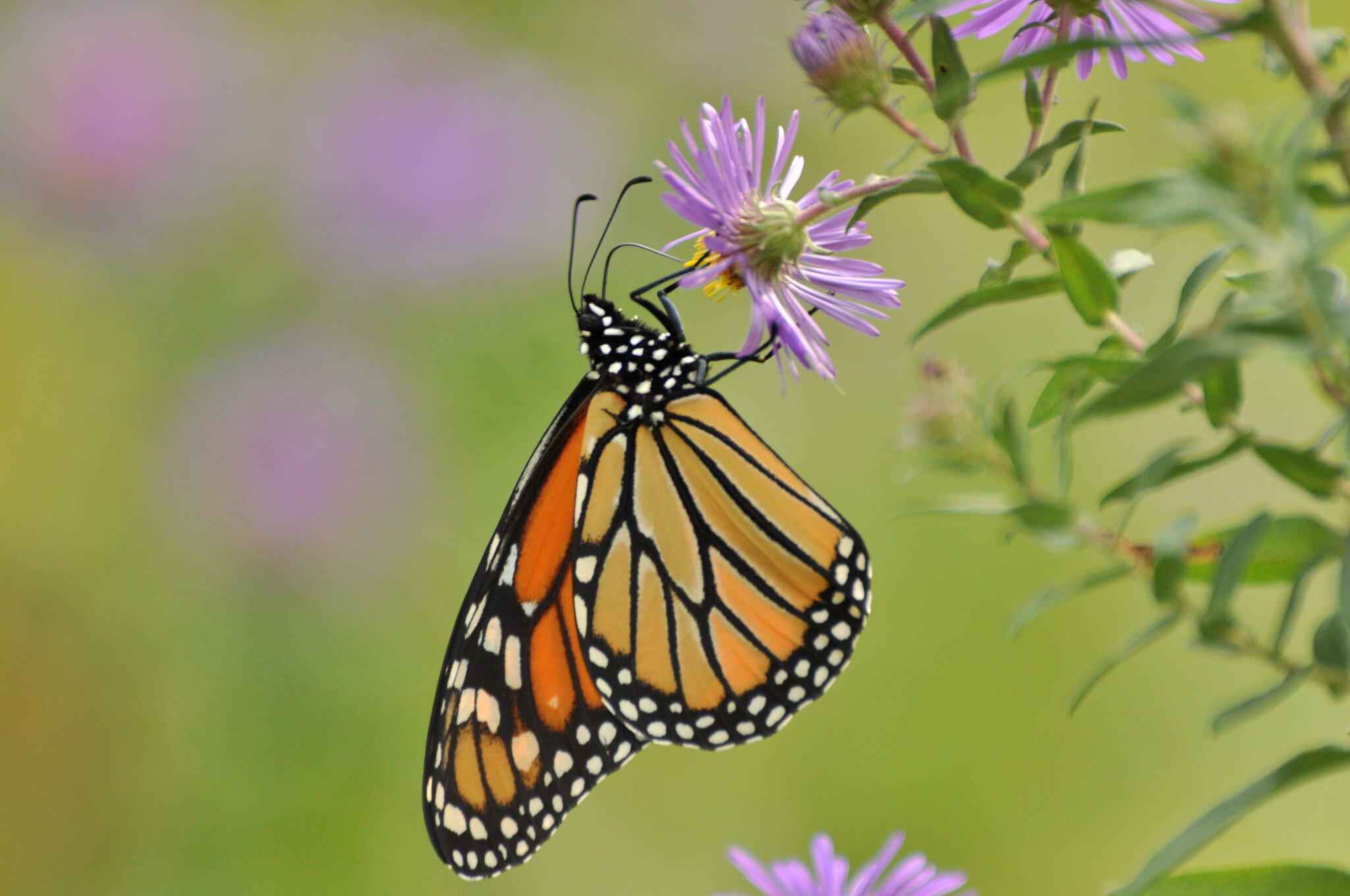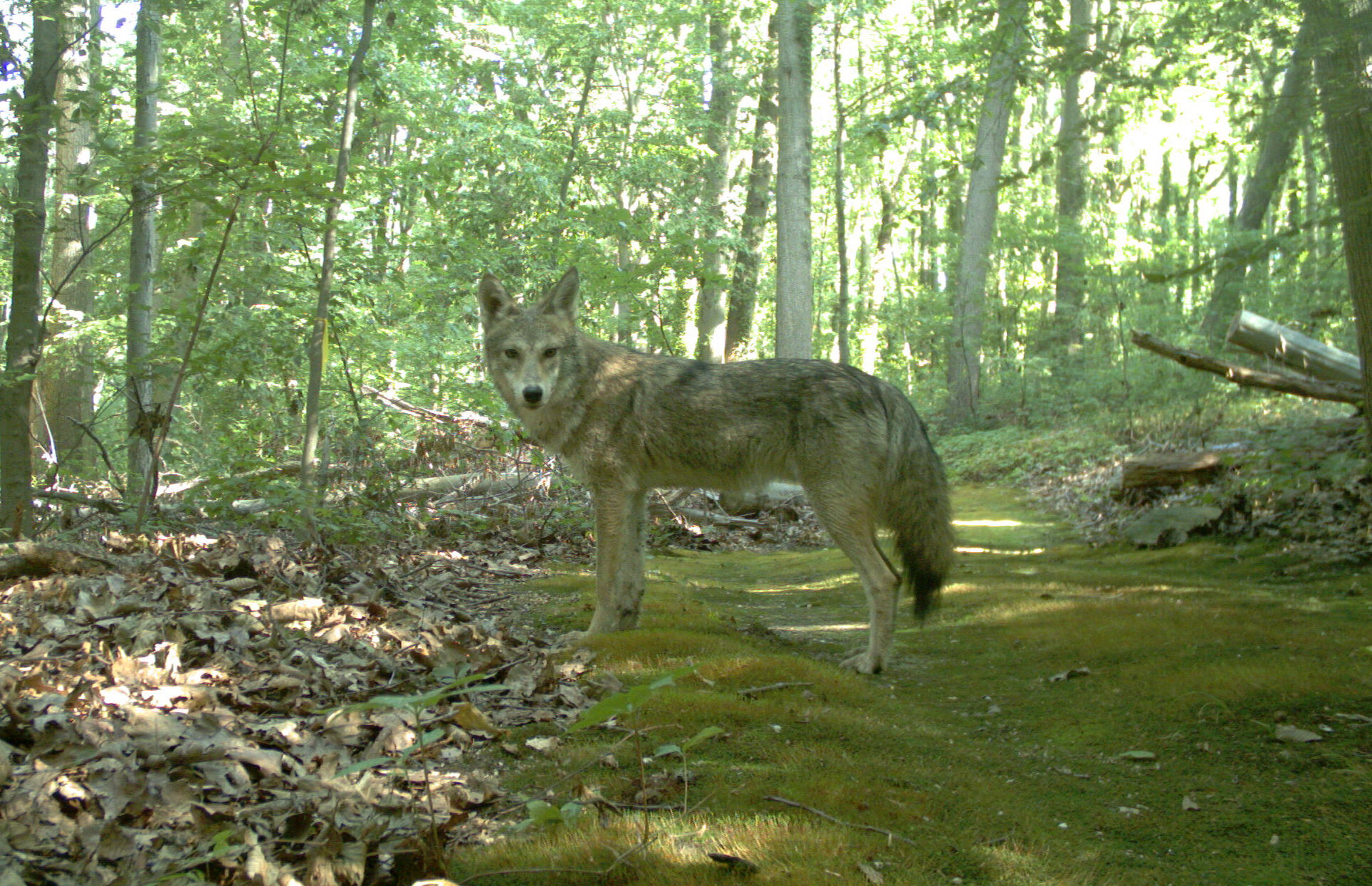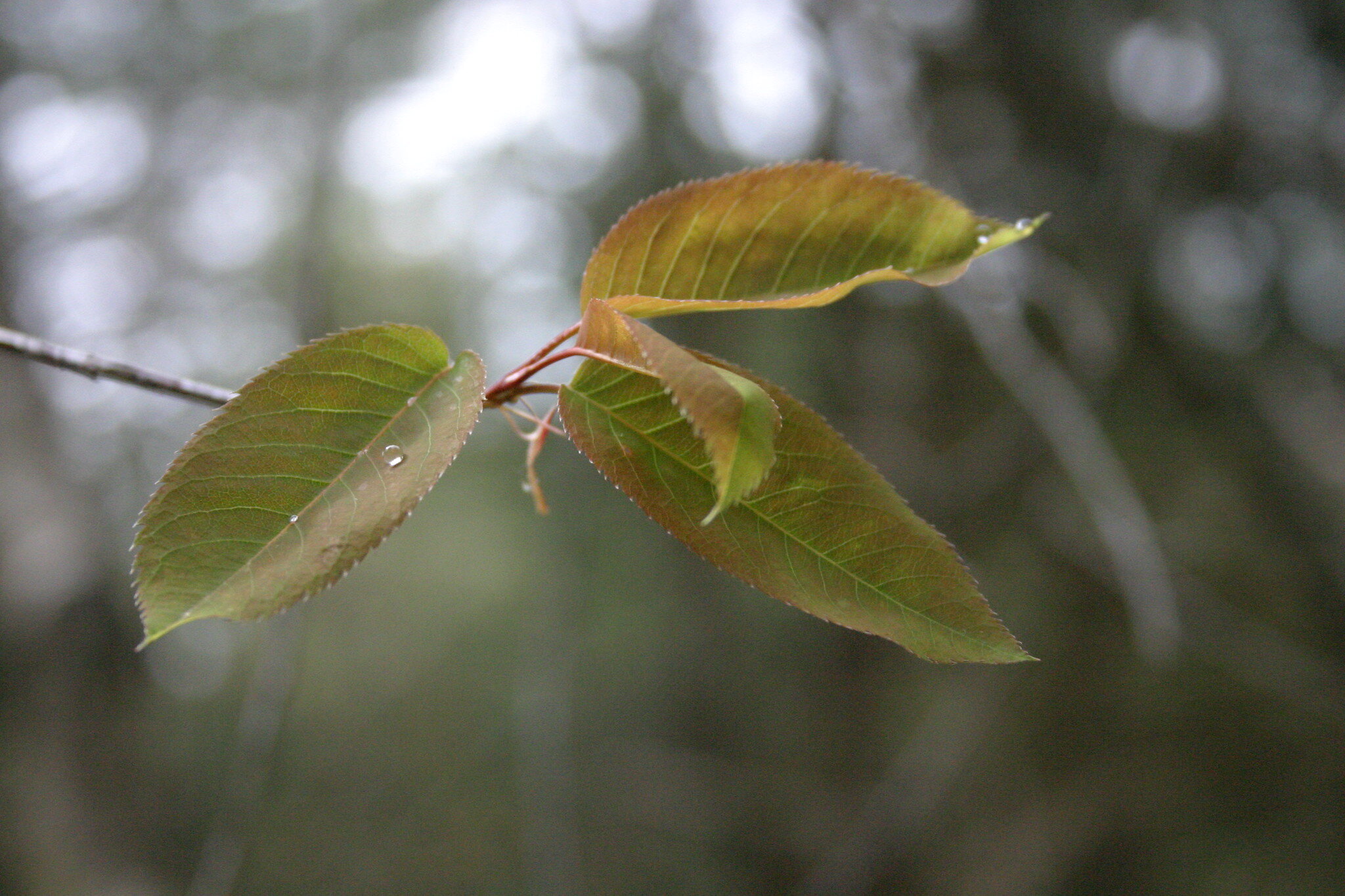
Marsh Trail at the Scully Estate
I always marvel at the carpet of moss on the berm of the Marsh Trail on the Scully Estate. Its verdant hues are especially welcome in the muted landscape of a winter’s walk. There is something seductive about moss that makes me slow down when I see it brightening grey boulders, draping on decaying stumps or lining a shady path. I am enticed to kneel down and brush my hand over its softness or to feel a tickle from its spore caps. I cannot resist pressing my fingers into its cushions and to peer into its miniature realm.
Moss plants grow where other plants cannot make it and their small size makes them able to live in tight spaces. When my moss awareness is aroused I see them in cracks on a sidewalk, fissures in bark, on roof tiles, and on all kinds of soil, wood, rock, or shapes of stone. They grow in colonies and these mossy gatherings are usually made up of several different species, of which there are 22,000 worldwide. North America alone is home to 1,200 of them. Mosses are some of the oldest and simplest plants on earth. They have been around for 450 million years and evolved from green algae into spore bearing plants able to survive in dry, terrestrial environments.
I am nurturing a patch of moss in my garden. I brush away small stones, fallen acorns and leaves from its surface. I pull up path sedge seedlings growing up through it and tug at any encroaching vinca and ivy. No mowing, just a slow, sensual brushing. Being the plant nerd that I am, I have attempted to identify some of the species that make up this expanding carpet. The key in my field guide identifies Dicranella heteromalla, common name – fine hair moss. Hydrated and discrete in a saucer of water a single strand resembles a tiny tree with needle-like leaves, and a bright pink spore capsule. Common haircap moss, Polytrichum commune, is also present, easily identified by whorls of narrow leaves that from above remind me of masses of green stars. Another familiar moss is Leucobryum glaucum, or pincushion moss, which appears as billowing cushions of grey green velvet. Identification of some other species will require much practice and a stronger hand lens. Mosses might be simple plants, but due to their small size and diversity they are inherently difficult to identify. Meanwhile, I am content to flip through the guide and read some common names. There is medusa moss, apple moss, wavy starburst, tiny tornado, gnomes hood – folkloric nomenclature that describes a texture of the colony, a shape of spore capsule or form of leaf.
The morphology of moss enables it to hold water like a sponge. Wispy roots just hold the plant in place. There is no vascular system and so strong stems are not required. Each plant supports another in a tight colony. Leaves are shaped just right or positioned in a spiral pattern on the stem to catch water droplets. The leaves are also thin enough to absorb water directly. Osmosis moves water and nutrients from cell to cell and photosynthesis only occurs when its leaves are swelled with moisture. The bristly spore caps, held high above the leaves, release thousands of spores, which are carried on currents of air. The germinating spores form what resembles an algal mat before developing into male or female leafy shoots. Again, water makes moss possible. Sperm are carried to eggs in water droplets. Invertebrates that live within the moss also transport elements of the moss life cycle.
I am enchanted by the thought of what lives in the moss world, just as my imagination was tweaked as a child while lining my den in the woods with a moss carpet. Colonies of moss are indeed tiny rainforests where dewdrops irrigate the canopy. A view through the lens of a microscope reveals a fascinating realm that is just beneath our feet along the trail or garden path. Field studies have quantified astounding numbers of organisms that live in just one gram of moss. There are algae and bacteria growing as epiphytes on moss leaves and stems. Red mites eat the foliage and predators, such as pseudo scorpions and carabid beetles, eat the red mites and other herbivores. Springtails eat fungi; rotifers live in pools of water trapped amongst the leaves. A fascinating organism known as a tardigrad, or water bear, is inextricably bound to moss. This microscopic creature lends its common name to its bearlike appearance. Stout with eight stubby legs, it trundles through the moss forest feeding on moss leaves. When the moss dries up the water bear shrinks with the moss to a roly-poly structure called a tun, which rolls around in a form of suspended animation, enduring extreme desiccation with the moss until the next “rainfall”.
We should let mosses grow where they can. They might be in areas where lawn is not a realistic option; growing between bricks on a patio; creating a decorative patina on garden urns. These enchanting miniature forests bring environmental benefits to our world and have been doing so for eons. They conserve water, prevent erosion, sequester carbon, build soil and provide habitat. Perhaps that is why we are soothed when we walk beside them or even step on top of them. We experience this same calm feeling when we walk under a green canopy of trees. These diminutive, humble plants have grandeur en masse, making us slow down and consider what is under our feet. They are remediation in a damaged world, seemingly simple in a complex one.
Sources:
“Gathering Moss”, by Robin Wall Kimmerer. 2003. Oregon State University Press.
“Common Mosses of the Northeast and Appalachians”. 2013. Princeton Field Guides.
“Moss Gardening”, by George Schenk. 1997. Timber Press



